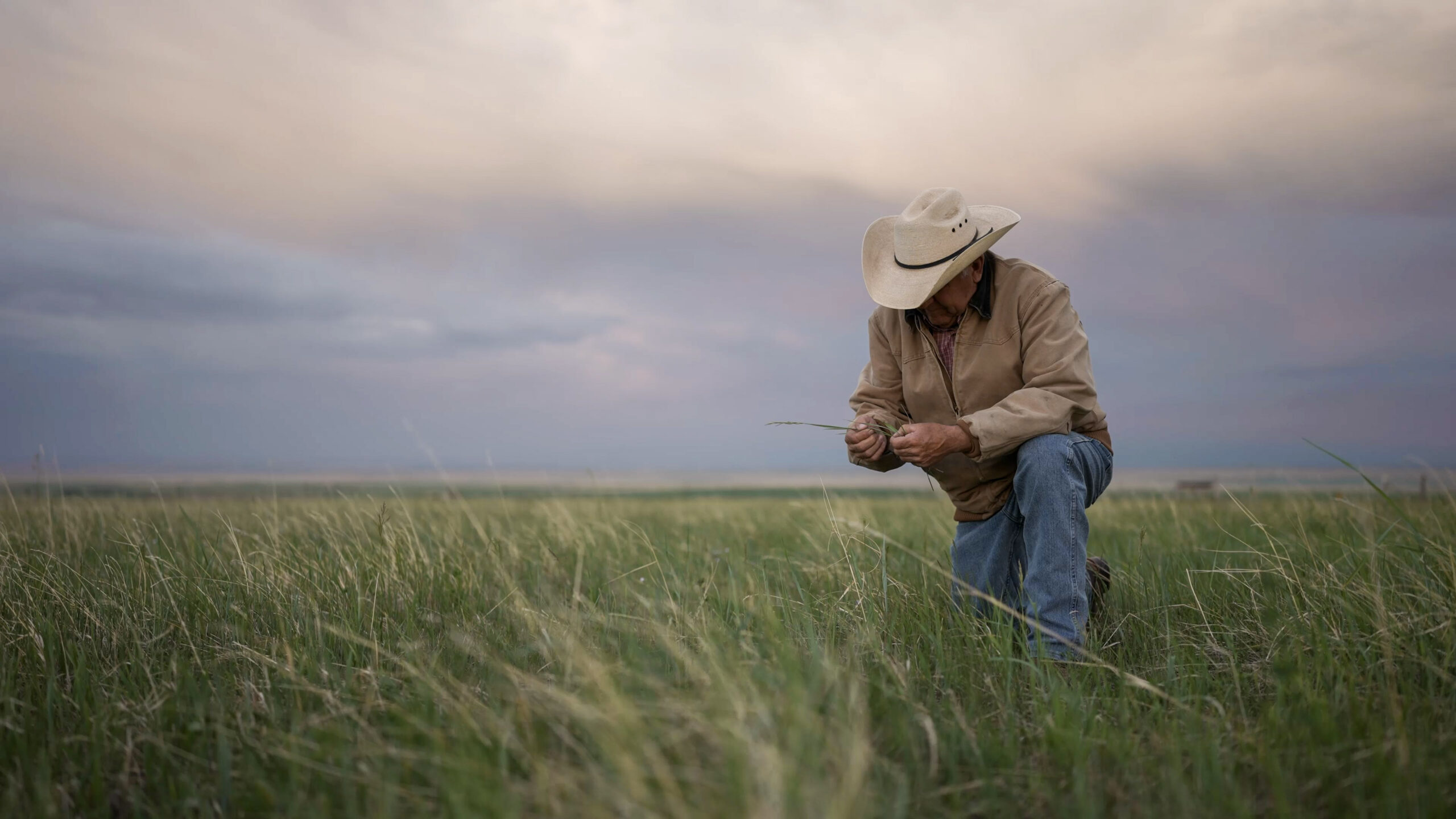We envision a land-based economy in which the return on investment grows over time as the lands and communities from which goods and services are derived, are stewarded and sustained as working lands.
The goal of the Western Grazing Network is to regionally pilot a new model of natural resource management, conservation and market-derived financing that values landscape functionality for both agriculture commodity production and a full suite of ecosystem services, including GHG benefits.
This will be accomplished through the below-outlined objectives addressing: the advancement of the regional pilot project Hub cohort; implementation or enhancement of climate-smart livestock production activities; measurement, monitoring, reporting and verification of climate-smart commodity production and associated ecosystem benefits, with a focus on GHG benefits; and the marketing and promotion of livestock and associated ecosystem services originating from the land base of partnering ranches.
Cultivate Climate-Smart Ranching Hubs of dedicated and visionary livestock producers and their trusted partners to collectively develop, implement, monitor, quantify and broker climate-smart livestock to reduce transaction costs and retain more commodity value in local communities.
Invest in rancher-trusted, place-based partners to normalize climate smart management and commodity production on livestock grazing operations through locally-delivered technical assistance (TA) and financial assistance (FA) capacity.
Invest in robust field sampling, test emerging carbon analysis tools, and co-design a Network database to support reporting and verifications of accrued environmental benefits of climate smart grazing systems, and inform and improve models used for GHG-benefit quantification on Western working lands.
Build market share and represent the premium value of climate smart, ranch-derived goods (livestock, carcasses and meats) and explore carbon offset/inset value accrued through this pilot for sustainable returns to livestock producers.
The current Network consists of three Hubs across the Southwest region outlined on the map. If you would like to know more, please fill out the form provided below!
NRCS Conservation Practice Standards 528
NRCS Prescribed Grazing Enhancements (E528A – E528T): Enhancement activities for improved grazing management. Prescribed Grazing, including but not limited to purposes of temporary grazing deferment, fire fuels management, habitat management and targeted weed management, along with grazing for soil health and improved forage quality and quantity.
The practices associated below are available to partner producers to support enhanced grazing management systems on their operations:
CPS 382: Fence, including permanent, semi-permanent, temporary electric, and virtual fence
CPS 516: Livestock Pipeline
CPS 614: Watering Facility (troughs and tanks)
CPS 636: Water Harvesting Catchment
CPS 574: Spring Development
CPS 314: Brush Treatment
CPS 327: Conservation Cover
CPS 336: Soil Carbon Amendment
CPS 340: Cover Crop (with grazing termination)
CPS 484: Mulching
CPS 512: Pasture and Hay Planting
CPS 550: Range Planting
CPS 590: Nutrient Management (reduced fertilizer use in grazed systems)
Problem
Ag and forestry commodity production has become resource extractive as part of a larger food, fiber, and fuel system driven by external investment and profit.
Need
A new model for working lands management, conservation, and financing that values both commodity production and a full suite of ecosystem services by developing a marketplace that returns the investment back to the lands and communities from which the commodities and broader services are derived.

Vision
A circular, land-based economy that couples economic activity with ecosystem function to sustain commodity production, water security, and biodiversity in the face of a changing climate. A commodity market system that distributes value equitably to assets as they move through the supply chain in order to sustain the people and places that feed us. True cost accounting that includes: rural communities (knowledge and skills), commodity production (food, fiber, fuel), environmental benefits (carbon, water, biodiversity), verification and marketing (monitoring data and technology), and rural-urban interface (trusted suppliers and informed consumers).
Northern New Mexico Stockmen’s Association